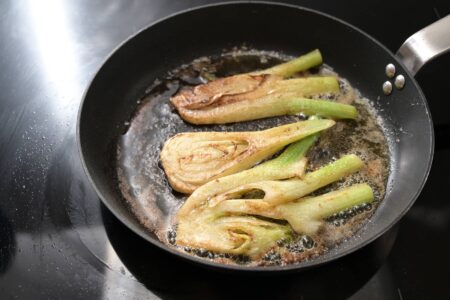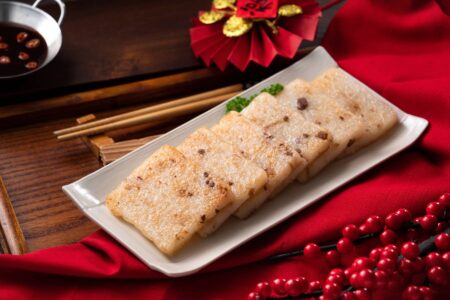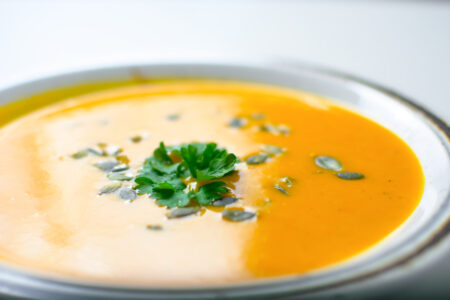
Ingredients
- 3/4 cup sugar
- 1 quart fresh Japanese Wineberries
- 1-1/2 cups self-rising flour
- 1/4 teaspoon baking soda
- 1/2 teaspoon salt
- 2 tablespoons softened butter
- 4 tablespoons sour cream
- 1/4 cup brown sugar
- 2 eggs
- 1 teaspoon vanilla extract
- 1/2 cup buttermilk
Directions
- Preheat oven to 350 degrees Fahrenheit.
- Spray 6 baking ramekins with non-stick cooking spray and line each dish with a sprinkling of sugar, using about 1/4 cup of the total sugar amount.
- Place berries on top of sugar in each ramekin, reserving about 3 cups berries for batter.
- Mix flour, baking soda and salt in a separate bowl.
- Cream butter, sour cream and remaining sugars (1/2 cup white and 1/4 cup brown).
- Add eggs, one at a time, beating until smooth.
- Stir vanilla into batter.
- Add 1/2 flour mixture, beat until blended, followed by buttermilk, stir in remaining flour mixture, blend until smooth.
- Fold reserved berries into batter.
- Pour batter into each ramekin, 3/4 full.
- Bake for 25 to 28 minutes, check for doneness with wooden toothpick (Insert toothpick in middle of cake, when toothpick is clean when removed, cakes are done).
- Cool for 2 minutes.
- Run knife around outside of cake (between cake and ramekin) and invert cakes onto serving dish.
- Top with ice cream, whipped cream or additional berries, if desired.
Japanese Wineberries produce delicious fruit and add beauty to any garden. This Wineberry Upside-Down Cake is the perfect way to use your harvest!
Prized by initiated berry lovers and discerning wild food foragers, Japanese Wineberries (Rubus phoenicolasius) are native to China and Japan, but their unique beauty has graced formal British gardens for centuries. Although the historical introduction of Wineberries to North America is not definitive, most likely they were planted in early European settlements in the Northeast, where in some areas, they are regarded as invasive plants. Left to their own devices, Wineberries can form a dense thicket, but when properly pruned and maintained, Wineberries make a beautiful and delicious statement plant for the all-season home garden. Graceful arched canes are especially beautiful in winter gardens.
Wineberry Identification and Propagation
From spring until late fall, bright-green Wineberry leaves boast a silvery underside and reddish-brown canes with few thorns. Small, white blossoms prolifically yield delectable, sweet/tart fruit in clusters of hairy calyx that open as the fruit ripens. Biennial plants, Wineberries produce canes the first year of growth and set fruit the second year. Wineberry propagation is simple; gently bend a large, mature cane, forming an arch, and weight the top, about five inches in length, with a heavy stone, where it will take root.

If allowed to grow undisturbed, Wineberry canes will naturally bend to the ground and root themselves. Cuttings of mature canes may also be used for propagation and seeds saved from mature fruit are another option for growing Wineberries. Plants and seeds are readily available from several online sources and Wineberries are hardy for Zones 5 through 8.
Japanese Wineberries are technically not berries; rather, they are aggregate fruits. With a central core, the cluster of tiny fruit is similar to both red and black raspberries, but Wineberry fruit is not as tightly compacted as the raspberry. Not as sweet as raspberries, Wineberries possess a brighter flavor that is described by some to be almost kiwi-like. Few thorns mean easier picking than blackberries and far fewer battle scars for the picker. While harvesting, Wineberries leave an invisible, slightly waxy substance on bare hands, but it quickly dissipates after picking.

Japanese Wineberries are Part of Family History
In the 1960s, my father purchased property in western North Carolina’s Richlands area. Abandoned for years, a six-room house, surrounded by 50 acres, became our family’s vacation destination. With no indoor plumbing or electricity, the “homeplace” was an upgrade from previous tent camping trips and my brother and I enjoyed exploring nearby fields, streams, and forests. Although not unusual for its time, the Richlands property was a perfect example of biodynamic, sustainable permaculture; the former owners lived a self-sufficient lifestyle that necessitated infrequent trips to a store.
Remnants of that bucolic existence still lingered when my father purchased the property and we enjoyed harvesting fresh foods from numerous fruit trees that grew in an old orchard, which despite years of neglect, yielded delicious cherries, peaches, apples, and pears. Close to the old house, hillsides were covered with black and red raspberries, blackberries, and tiny wild, intensely flavored strawberries. With a bounty of fresh, sweet fruits to choose from, my brother and I agreed our favorite, most anticipated summer treat was the Wineberry.
Japanese Wineberries thrived on the Richlands property, producing large uncontrolled canes that grew to enormous heights and tangled to form a canopy over our heads. When fruit began to ripen, my brother and I wriggled inside the makeshift bramble room to pick as many berries as we could eat, standing on tiptoe to reach ripe fruit over our heads. We ate sweet, tart fruit until we were stuffed to the gills, our crimson-stained hands and mouths telltale signs that let our mother know why the buckets we presented to her were not full.
Japanese Wineberries have become naturalized throughout the eastern United States and they thrive on roadsides, riverbanks, wooded forests and even open fields where they prefer fertile soil and a good amount of moisture. The perfect wild food for beginning foragers, Wineberries are edible and have no poisonous look-alikes that lead to a case of mistaken identity. Other fruit-bearing canes, such as raspberries and blackberries, are also edible non-toxic foods. Due to their loosely clustered fruit and open core, Wineberries have an extremely brief shelf life and it is best to consume or process them as soon as possible after harvest.
Rich ruby red juice makes eye-appealing jam and jelly and Wineberries are delicious baked into pies or cakes or added to homemade ice cream. To freeze fresh Wineberries, place a single layer of berries, without touching each other, on a parchment paper-lined baking sheet and freeze until berries are firm. When completely frozen, they may be stored in plastic freezer bags for months. It is best to use frozen berries in that state, since thawing will reduce them to mush.

Wineberry’s fragile fruit is unlikely to make it to farmer’s market stands, but the delicious flavor is reason enough to include this plant in your own backyard garden. Attractive to pollinators, birds are the primary competition for Wineberries and there is no need to use chemical herbicides or pesticides to achieve an abundant crop. Harvest ripe fruit just before including it in breakfasts or desserts or channel your inner child and eat as you pick.
Original Recipe by Chef Forager Clark Barlowe, of Potential Pantry, who learned to identify, harvest and eat North Carolina Wineberries as a young child. Now based in Oregon, Barlowe continues his love for foraging and cooking wild foods.
Cindy Barlowe gardens 8 acres in North Carolina, where she grows and saves heirloom seeds, while freelance writing, covering the “seedy” side of gardening at Seed Tales.
All MOTHER EARTH NEWS community bloggers have agreed to follow our Blogging Guidelines, and they are responsible for the accuracy of their posts.






